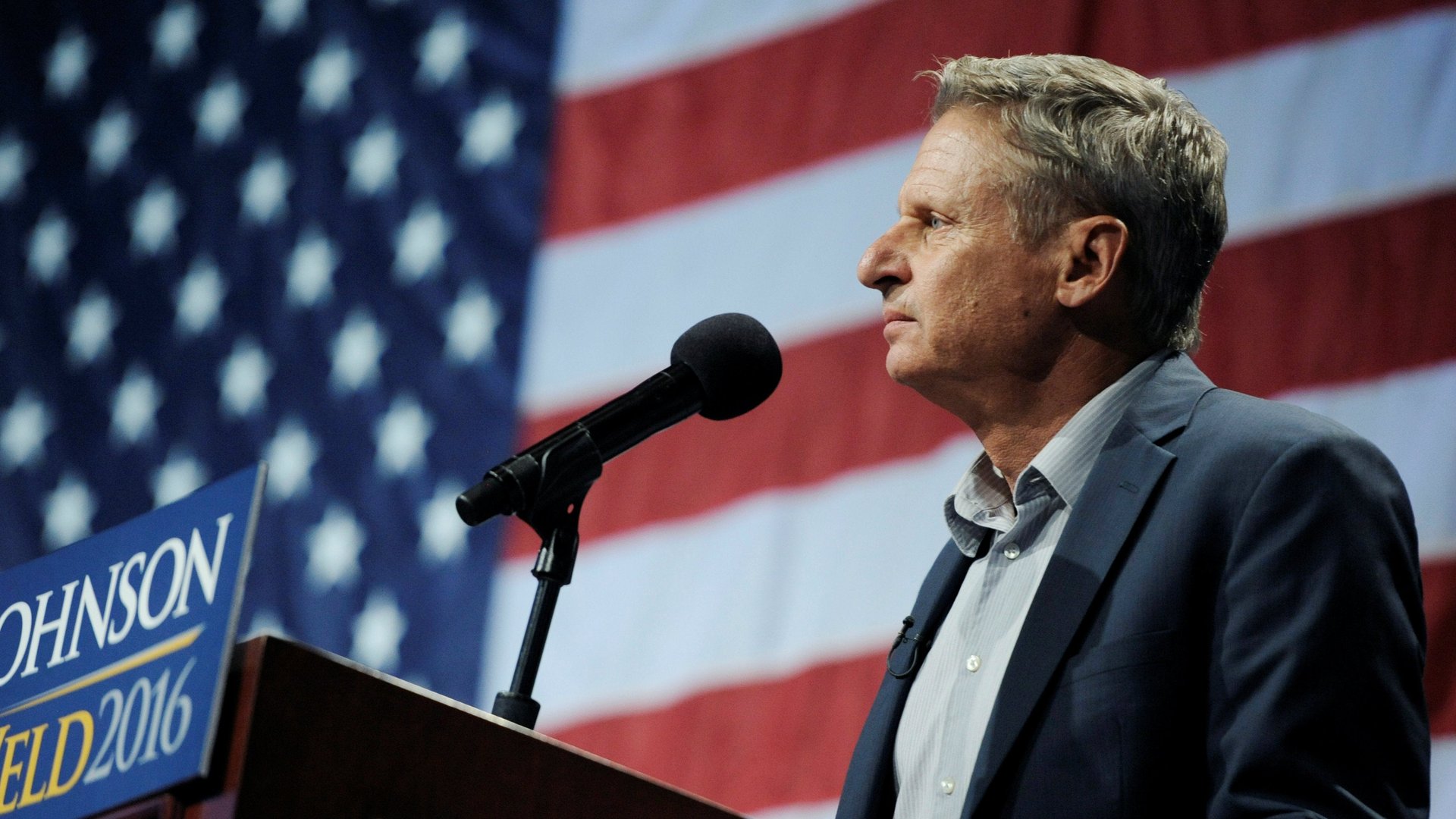This was the year a third party candidate could have won the election
If there was ever an opportunity for a serious independent or third-party presidential candidacy, this was the year.


If there was ever an opportunity for a serious independent or third-party presidential candidacy, this was the year.
Antipathy toward both major-party candidates is deeper than at any time since the Civil War. In addition, a recent Gallup Poll finds that 57% of Americans believe the Democratic and Republican parties are so lacking that another major party is needed.
Of course, Libertarian Party nominee Gary Johnson and Green Party contender Jill Stein are in the race, as is independent Evan McMullin. But, none of them are taken seriously. When you challenge the two major parties, you must be able to compete with the big dogs for money, media attention, and grassroots organization. They haven’t come close.
Johnson, a former governor of New Mexico, has a commendable record of public service and business success. But, his deficiencies as a national candidate—let’s call it failure to pass the Aleppo Test—have held him back. He should have changed his name to “None of the Above.”
So why didn’t a stronger candidate run?
Billionaire Michael Bloomberg considered an independent bid. But the former New York City mayor feared he would siphon off too many votes from Clinton, paving the way for Trump’s victory—a possibility he wouldn’t chance. Amazingly, none of the 585 people who currently serve as governors or members of Congress were willing to run, either.
There are plenty of barriers in the way.
State laws are a jungle of ballot access rules, and it takes battalions of lawyers and armies of petition gatherers to get a non-major party candidate through the thicket. Campaign finance regulations—gullibly labeled “reforms” by those who supported them—favor the major parties. The Commission on Presidential Debates requires that candidates poll at least 15% to be invited on stage.
Another obstacle is the reluctance of voters to “waste” their votes. We see that now as both sides, especially the Democrats, are pressing supporters of Johnson and Stein to focus on the binary choice of Hillary Clinton or Donald Trump.
What the “binary choice” argument ignores, however, is that strong third-force movements can influence the nation’s course even when their candidates don’t win. That’s because their supporters become swing voters in subsequent elections and both major parties will vie for their votes and try to co-opt their issues.
An example was Ross Perot’s independent campaign in 1992, which focused on eliminating the deficit. He won an impressive 20 million votes. The “Perot Voter” became the most highly sought after constituency in the 1994 mid-term elections. Arguably, the political pressure that made balanced budgets possible by the end of the decade got its start with Perot’s candidacy.
Let’s not forget, too, that the Republican Party began as a third party, offering an alternative to the collapsing two-party system of Democrats and Whigs. Republicans lost their first time out in 1856, but won four years later in a fractured four-way contest with Abraham Lincoln as their standard bearer.
Not since George Washington, who was elected twice as an independent, has a non-major party candidate won the presidency. Third candidates who represent the ideological fringe—and there have been many of them, such as Ralph Nader, Pat Buchanan, and Jill Stein—usually struggle to capture just 1-2% percent of the vote. That’s why Perot’s example stands apart. He ran from the center and won 19%.
Theodore Roosevelt, a former president, hit the high water mark for third-party candidates in 1912 when he drew 27% of the vote, finishing second. Two other ex-presidents, Millard Fillmore and Martin Van Buren, attempted third-party comebacks after they had left the White House. Both came in third. In 1924, Wisconsin senator Robert La Follette, campaigning as a Progressive, captured 17% of the vote, and in 1968 Alabama governor George Wallace won five southern states and almost 14% of the votes cast.
They all staked their claim—and lost in the end.
As you can see, there are plenty of reasons why smart people don’t run for president as independents or third-party candidates. But this year, there was a good reason to try: the right candidate would have won.